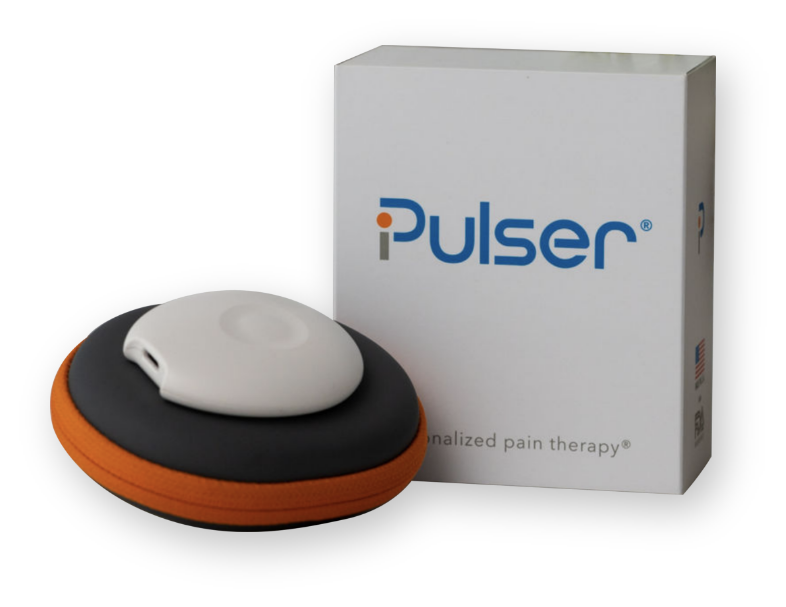If you spend a lot of time on electronics every day, you may be experiencing stiffness and pain in your neck. What is the position of your head and neck as you read this article? Proper posture is key, and with some practical tips, you can prevent issues. You may be dealing with a condition called tech neck, but don’t stress because there are plenty of things you can do to relieve the pain.
What Is Tech Neck Syndrome?
When you’re looking down at your phone or a computer screen all day, the muscles in your neck contract to support your head. Hours of your head in this position can cause the muscles to get over-exerted, tired, and sore. This condition is what's referred to as tech neck syndrome. Many believe (and have also been told by doctors) the best position is to sit up straight when working at a computer, but that puts a lot of pressure on the discs in your back. Sitting with a reclined angle is actually a better position for your body.
What Are The Symptoms Of Tech Neck?
Now that you’re aware of what tech neck is, you may be wondering what the symptoms are. At first, symptoms are generally pretty mild but increase as time goes on unless intervention is done. Some of the most common symptoms are:
- Headaches and head pain
- Jaw pain from the cervical spine misalignment
- Stiffness in the upper back, shoulders, and lower neck
- Localized sharp, stabbing, intense pain
- Numbness and tingling in the arms and hands as a result of inflammation and spinal nerve irritation
- Reduced mobility in upper neck, shoulders, and back
Excess screen time can cause the muscles in your chest, neck, and upper back to become deconditioned. It’s important to maintain good posture to avoid a worsening of symptoms associated with tech neck. Luckily, there are some easy things you can do to prevent or halt symptoms.
How Serious Is Tech Neck?
Tech neck is something that you want to be cognisant about, as it can be a literal pain in the neck. It’s unlikely that you can quit your electronics cold turkey, as so much is done with computers and cell phones these days. Finding a good balance and proper positioning of the neck can help prevent and improve tech neck. You may deal with inconvenient pain that is temporary, but there may be a risk for long-term, more serious damage in some cases. You may experience more extreme symptoms that include chronic aches, stabbing pains, and muscle spasms. One of the bigger risks of tech neck is nerve root irritation, and your hands and arms can be affected with numbness and tingling symptoms.
Ways To Prevent Tech Neck?
Now that you know more about what tech neck is and the symptoms, you may be wondering what you can do to keep from dealing with this. There are some pretty easy tips you can follow that will help prevent tech neck but also can be effective in reducing neck and back pain. Here are some things you can do to help prevent this.
- Practice proper posture - sitting at your desk with your feet on the floor and back flush against the chair is the best posture to avoid any problems with your spine or muscles. It’s important to avoid rounding your lower back, as that can cause your head to slump forward.
- Limit phone usage - limiting phone usage is not only good for your eyes but is an excellent way to avoid getting tech-neck. When you look at their phone, your head is often slumped forward, putting a lot of pressure on your neck, spine, and muscles. Holding your head up more can be helpful as well.
- Take routine breaks - when you work at a computer all day, it’s important to take breaks. Staring at a screen all day is a lot of blue light exposure, and getting outside in daylight and sunshine is important. Make sure you leave your computer screen at least every couple of hours to help move the muscles in your body.
- Set your monitor and keyboard up at the right distance - if your monitor and keyboard are in the most ergonomically correct position, you can cut down on pain from working on your computer.
How Do You Stop Tech Neck?
If you spend a lot of time working on your computer or looking down at your watch, consider wearing an activity tracker to remind you when to get up. Take time to stretch and move around every hour. It’s also beneficial for you to sit in a chair that has a headrest and is the right size for your body.
Don’t foget to stay hydrated. You may be surprised that the pain you are dealing with could be related to dehydration.
The most important thing to do to keep your chances of developing tech neck down is to get up and move. Do some yoga stretches, take a walk around the block, or anything to give your neck a break.
Tips To Relieve Tech Neck?
When it comes to tech neck, prevention is key. Being aware of how much time you spend on electronics is probably the most important step, followed by proper posture and regular breaks. If you’re dealing with tech neck, the good news is that a lot of the symptoms are reversible. Even doing some simple, specific exercises can be huge for relieving the pain.
Exercises To Relieve Tech Neck
Neck stretches are probably one of the most important and effective stretches to relieve tech neck. There’s an added bonus: a strong neck can also help prevent problems in the upper back, arms, and shoulders as well. Some stretches like forward and backward tilt, side tilt, side rotation, and shoulder roll are all great exercises you can perform daily, even from the comfort of your desk.
Is There A Cure For Tech Neck?
The good news is that the cure for tech neck is very simple compared to some other conditions. It’s important for you to maintain good posture, being aware of how you’re holding your head, and doing exercises are all very effective at minimizing symptoms and risks. Tech neck isn’t something you have to live with for the rest of your life, as long as you’re willing to make some lifestyle changes.
Preventing and stopping tech neck is a fairly easy process, especially if you’re willing make a few changes to the way you work everyday. Today, many people today find themselves on their computers and smartphones for hours on end, whether it’s for work or personal use. Don’t suffer from neck pain any longer; follow these simple tips above to keep your body in tip-top shape.
Resources:
https://healthmatters.nyp.org/how-to-prevent-tech-neck/
https://www.johnmichelsmd.com/blog/what-is-tech-neck
https://www.bspine.com/blog/the-dangers-of-tech-neck
https://www.spine-health.com/blog/reducing-neck-and-back-pain-work
https://www.rheumatologyadvisor.com/home/topics/pain-management/how-to-prevent-tech-neck-in-8-steps/
https://www.webmd.com/fitness-exercise/fitness-neck-stretches
https://www.spine-health.com/conditions/neck-pain/text-neck-treatment-and-prevention








